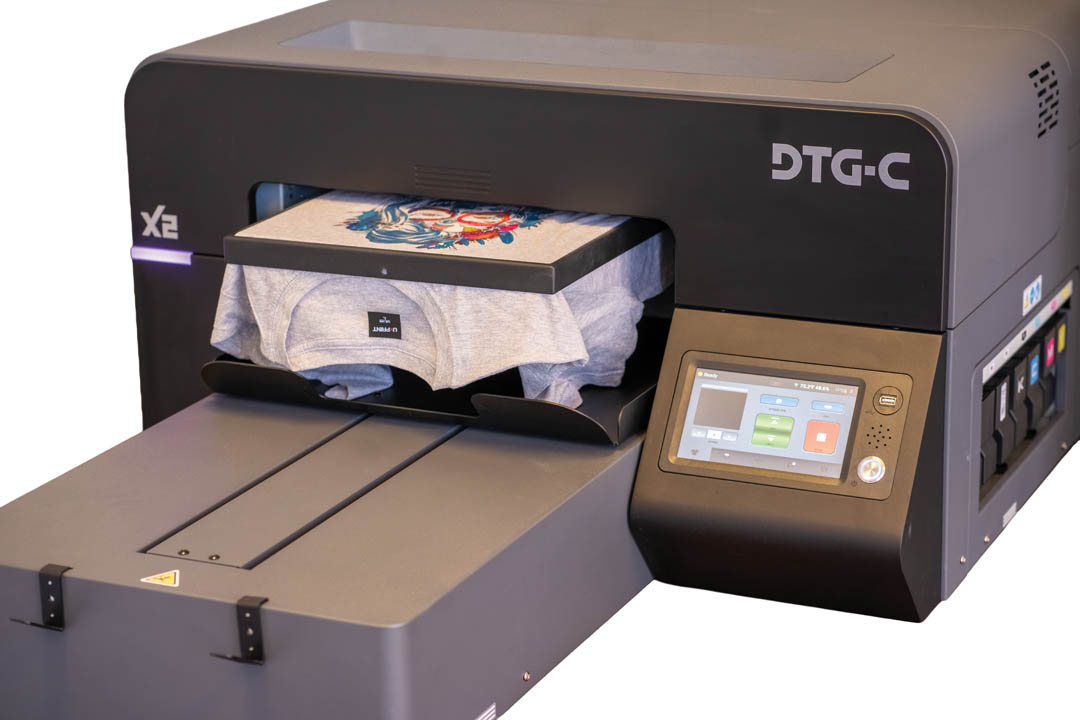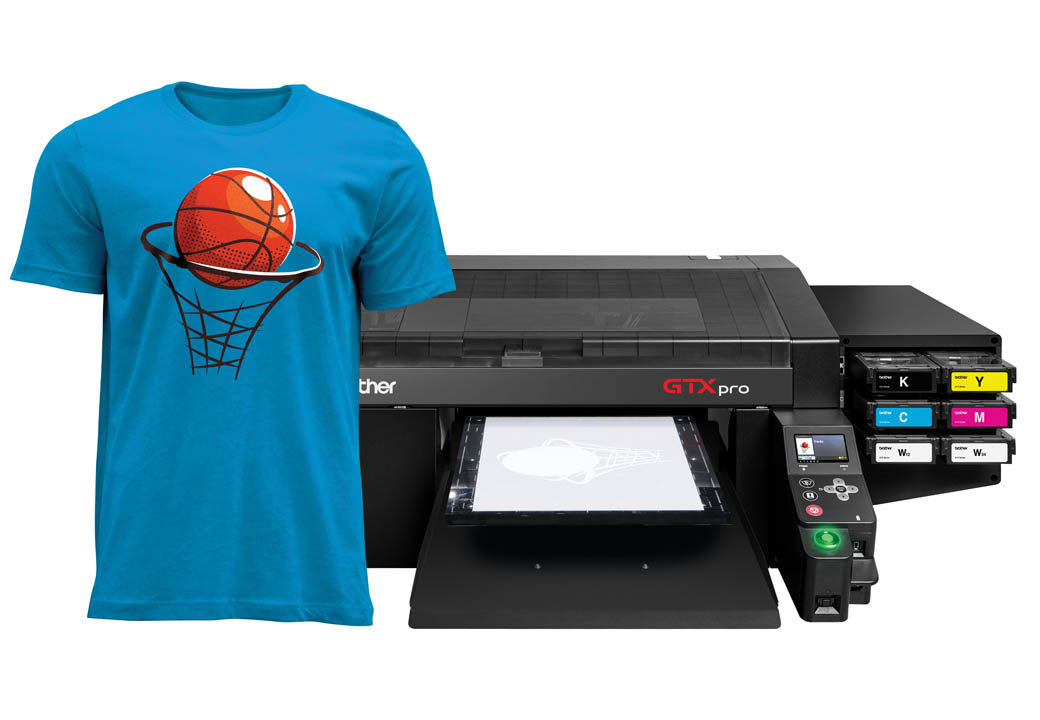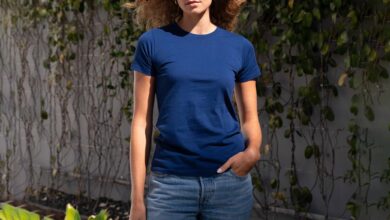With an insatiable appetite for custom goods and personalization, consumers continue to shape the printing industry at large. Business owners have countless opportunities to drive revenue, but few turn a profit like direct-to-garment (DTG) printing.
Using DTG, decorators combine hallmark qualities like magnificent color, complex designs, and superior prints with the convenience of a print-on-demand, no-minimum-order-quantity business model sold at a premium. Recent innovation within the segment makes it easier than ever for small businesses to capitalize on this big opportunity.
“The reality is we are living in an Amazon world. ‘I want one. I want it custom. I want it now,’” said Terry Combs, sales and training at Equipment Zone. “DTG is an excellent primary business, or a perfect addition to an existing decorating business.”
Back to basics
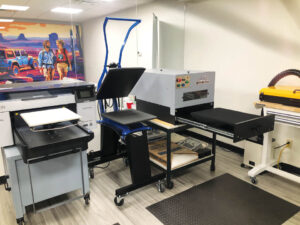
Unlike other textile printing methods, DTG combines a proven pretreatment solution and, typically, a water-based ink process to achieve a remarkably durable print on various garments, from T-shirts, hoodies, and sweatshirts to hats, tote bags, and beyond.
“Pretreatment is a liquid solution applied to fabric before DTG printing, especially on dark garments, to improve ink adhesion and print quality. It acts as a primer, preventing white ink from soaking into the fabric and ensuring vibrant, long-lasting prints,” explained Mark Bagley, director of marketing at Brother International Corporation.
Once the pretreatment is properly cured, ink is applied directly to the fabric using DTG equipment. While the ink is wet initially, the heat from the second curing process — typically applied using a heat press or a conveyor dryer — causes the water in the ink to evaporate. Eventually, the heat facilitates a chemical reaction that leads to a strong and lasting bond.
Instead of the ink resting on top of a garment like a layer, it physically penetrates the fibers. As a result, industry professionals say DTG offers greater softness and breathability compared to heat transfer vinyl (HTV) or direct-to-film (DTF) printing.
“DTG allows for high-resolution, detailed artwork with fades and gradients to be easily printed. Since it does not make contact with the garment, DTG also offers a faster solution for printing over seams, zippers, and pockets,” Bagley added.
The veteran printing method, which is revered for its CMYK full-color capabilities and short-run production with quick turnaround, is an ideal option for natural fibers like linen, hemp, bamboo, and, above all, 100% cotton or cotton-blend fabrics — specifically ring-spun cotton.
According to Combs, the material is manufactured with thinner threads compared to regular cotton, translating to a smoother and easier-to-decorate surface.
While some DTG decorators push the boundaries by printing on polyester and 50/50 blends via special techniques and processes, these synthetic fabrics can bleed into a print and cause unintended discoloration or color shifts in the design.
“We’re addressing two pain points of DTG printing, which are inconsistent manual pretreatment by hand (or a costly separate pretreatment machine) and printing to only cotton. One of our printers had a built-in pretreatment system that pretreats the print area only, not the whole surface. It also prints on 100% polyester and blends, in addition to 100% cotton for flexibility,” said Ayden Tran, digital marketing manager at RICOH DTG.
With the advent of hybrid-format DTG printers, decorators also have the option to use integrated DTF functionality to print on a polyester garment, said Karl Tipre, executive manager at DTG Connection. He credits the technology for expanding the range of printable materials, including 100% dark polyester sans pretreatment.
“This increased versatility is a competitive advantage, as DTG printers are considered ‘better DTF printers than most dedicated DTF printers’ due to their stability and ease-of-use stemming from over a decade of technological advancements.”
Thanks to significant advancements in DTG technology, owners are now able to quickly adapt to consumer demand and scale their businesses accordingly, often by combining multiple printing methods.
For example, a decorator may choose to screenprint an image on the front left pocket, but use DTG technology to highlight 12 full-color sponsorship logos on the back. The printing method also pairs well with embroidery, bringing full-frontal images to life with small but value-added needlework over the print.
“Your primary business doesn’t have to be garments [to benefit],” Combs said, presenting a car wrap business, for example. “An add-on sale of T-shirts [featuring] the same wrap graphic is a natural way to boost sales to your existing customers.”
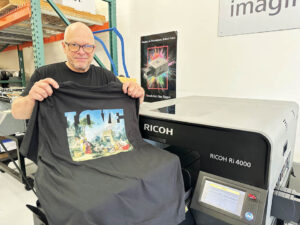
Evolve or dissolve
Industry professionals expressed excitement for ongoing improvements within the DTG printing segment, pointing to a bright future filled with creativity and innovation.
“Over the years, we’ve seen advancements in print head technology, leading to faster print speeds and higher resolutions (up to 1200 X 1200 dpi),” said Tran.
He praised the equipment’s quick setup, intuitive software, and lower labor costs in comparison to screen printing.
DTG technology also continues to evolve leaps and bounds in pretreatment and ink chemistry, from improving the suspension of the titanium dioxide in white ink and increasing the color gamut to incorporating more environmentally-friendly options and increasing overall washability and softness.
“White inks, in particular, have improved night and day over the past two decades,” Combs said. “No more separating in the bottle overnight. The pigments for white and colors are well suspended in the ink now and only require a slight shake at the beginning of each production day.”
“Likewise, pretreats have become much thinner and lightweight on the fabric,” he continued.
Bagley pointed to advancements in specialized features which effectively keep white ink in “a ready state,” including built-in white ink circulation to ensure it is properly suspended, wet capping systems to reduce print head clogging, as well as an integrated humidifier to help control environmental conditions.
In addition, how pretreatment is applied and cured is an area Bagley sees many shops trying to optimize. From entry-level all the way up to high-end production systems, modern barcode technology allows the defined volume and spray area to be pre-determined. As a result, operators can quickly switch between garments and print sizes.
Tipre said another option is to skip the pretreatment step altogether, as many garment manufacturers now offer a pretreated option for a minimal added cost. In some cases, the convenience eliminates the need to purchase additional pretreating equipment.
“Some print better than others, so test,” Combs added, telling decorators not to automatically assume it is a user error if a particular style or color does not print well.
Time-saving options are enticing but can vary in quality. As such, he advises users to test the same image on other garments — perhaps one that was personally pretreated versus another prepurchased pretreatment brand.
Advancements in pretreatment include storage periods as well. Image Armor set out to debunk misinformation associated with diminished garment quality over time by pretreating 12 shirts and printing the same image each month for a year.
“Every shirt looked exactly the same,” Combs said. “There may be a limit to how long you can store that pretreated shirt, but [thanks to advancements in pretreatment and ink chemistry], it’s certainly not as short of a window as some dealers and manufacturers may tell you.”
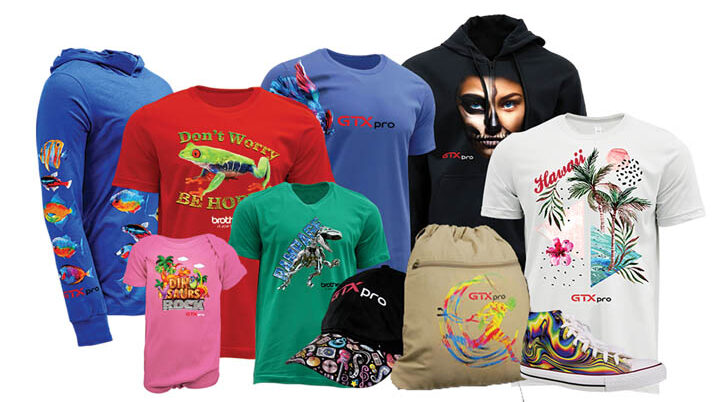
Considerations before purchase
Business owners are encouraged to consider numerous factors when customizing their DTG setup, from overall print quality and resolution to speed and versatility. By making the right investment up front, decorators ensure their customer bases are satisfied for years to come.
Mapping out the physical parameters is the first step in laying the groundwork, according to leading DTG suppliers. Since the equipment should not be placed directly next to a heat press, the consensus is a minimum of 6‘ X 6‘ space, with 10‘ X 10‘ and 10‘ X 15‘ cited as preferred.
“DTG printers vary in size. Consider the physical footprint of the printer itself, plus space needed for pretreatment (if external), heat press/dryer, garment loading/unloading, and ink/supply storage,” Tran explained.
In addition, proper ventilation and humidity levels are critical due to ink and pretreatment fumes. DTG printers, for example, require an operating environment with 45% or greater humidity to ensure peak performance. Decorators may experience poor ink flow if the printer is in a dry atmosphere or located under an AC unit, so humidifier needs must be taken into account.
Also consider target customers, market demand, and anticipated print volume. Tran said entry-level machines are a sweet spot for hobbyists and low-volume producers working from basements, climate-controlled garages, and even dining rooms, while industrial machines possess the capabilities and bandwidth to handle significant production.
He suggested prioritizing a user-friendly interface, with advanced features that enhance efficiency, such as quick-change platens, automated maintenance, and intuitive software.
“A built-in pretreatment system, for example, revolutionizes workflow by integrating pretreatment directly into the printer. This ensures precise, consistent application only to the print area, eliminating messy external machines, reducing waste, and preventing stains,” Tran added.
Aside from key operational features and functionality, the DTG suppliers agree that initial training and ongoing support must be part of the equation.
“Even though these machines are easier than ever to use, there will inevitably be a learning curve,” Tipre said. “A good equipment dealer will have a strong support department that can answer questions about operation, graphics, and equipment maintenance.”
In addition, owners should be hyper-aware of unfavorable company or product reviews, substandard technical support, as well as a poor track record in available parts. Other red flags include disappointing white ink performance, an overly complicated, messy, or inconsistent pretreatment process, and unrealistic speed claims.
“White ink is the most challenging,” Tran stated. “If demos show inconsistent white ink or frequent clogging, it’s a red flag. Have your graphics sent to the manufacturers to see if the results are comparable to what you would like to achieve.”
While many DTG printers use proprietary inks for performance and warranty, he said users should be wary of excessively high consumable costs
or if third-party inks are explicitly stated to void the warranty without clear legal backing.
“Also, always ask for real-world print times for typical designs on both light and dark garments,” he continued.
Making the investment
Once the facts are gathered, it is time to crunch numbers. Aspiring decorators can step into the game with a minimal investment, but there are drawbacks to machines at the entry-level price point, including a smaller print area and slower production.
Tipre said many small businesses fall into a price trap. Owners are lured into purchasing an inexpensive printer, which leads to more frequent operational setbacks like consistent clogging and maintenance challenges.
As such, he encourages entrepreneurs to think more broadly when weighing equipment options, including immediate needs, plus the next layer of growth. Expect a $15,000-$20,000 investment for a DTG/DTF hybrid printer with a large print area and production capabilities that users can grow into over time.
“That’s a pretty inexpensive garment production business — and can [conveniently] be set up in a spare room in your home,” Combs added.
Regardless of brand and price point, DTG equipment requires general upkeep and routine maintenance like any other technological investment. While every machine varies, expect to clean print heads, wiper blades, and other components, check white ink agitation and flush lines regularly to optimize efficiency and performance.
In addition, deep cleaning and filter replacement should be evaluated on a monthly to quarterly basis, depending on overall usage. The company representatives agree that automated maintenance features significantly reduce manual labor, gifting decorators more time to drive the business forward.
There is a correlation between how well equipment is maintained and its overall lifespan, with the average time frame hovering at 5-10 years. In fact, data shows most fail to hit a decade due to neglect or repair and replacement issues.
“Think of it like a car. You need to replace the maintenance station occasionally and fan filters. Also, the print head carriage life is rated for 20,000 prints,” Tipre explained. “Like vehicle tires and brakes, items need to be replaced.”
“Plus, new technologies are generally released on the same 5-year cycle,” Combs added, giving users a chance to consistently align their capabilities with the industry standard.
Even though a robust DTG setup can morph into a substantial investment, especially for industrial-grade purchases, the return on investment is an attractive business proposition.
“Owners can cater to a wide range of customer needs without large inventory commitments, while yielding high-profit margins on custom, on-demand apparel,” Tran said.
Fast-forward
Looking ahead, DTG printing is expected to thrive as a go-to method for high-quality, soft-hand apparel decoration.
“While UV printing is a rising star, it serves a different niche, primarily rigid and non-textile substrates. DTG’s direct-to-fabric application and unique hand feel give it a distinct advantage in the garment decoration space,” Tran said. “We expect DTG to continue innovating, potentially incorporating more automation and even broader substrate compatibility — solidifying its position in the custom apparel market.”

